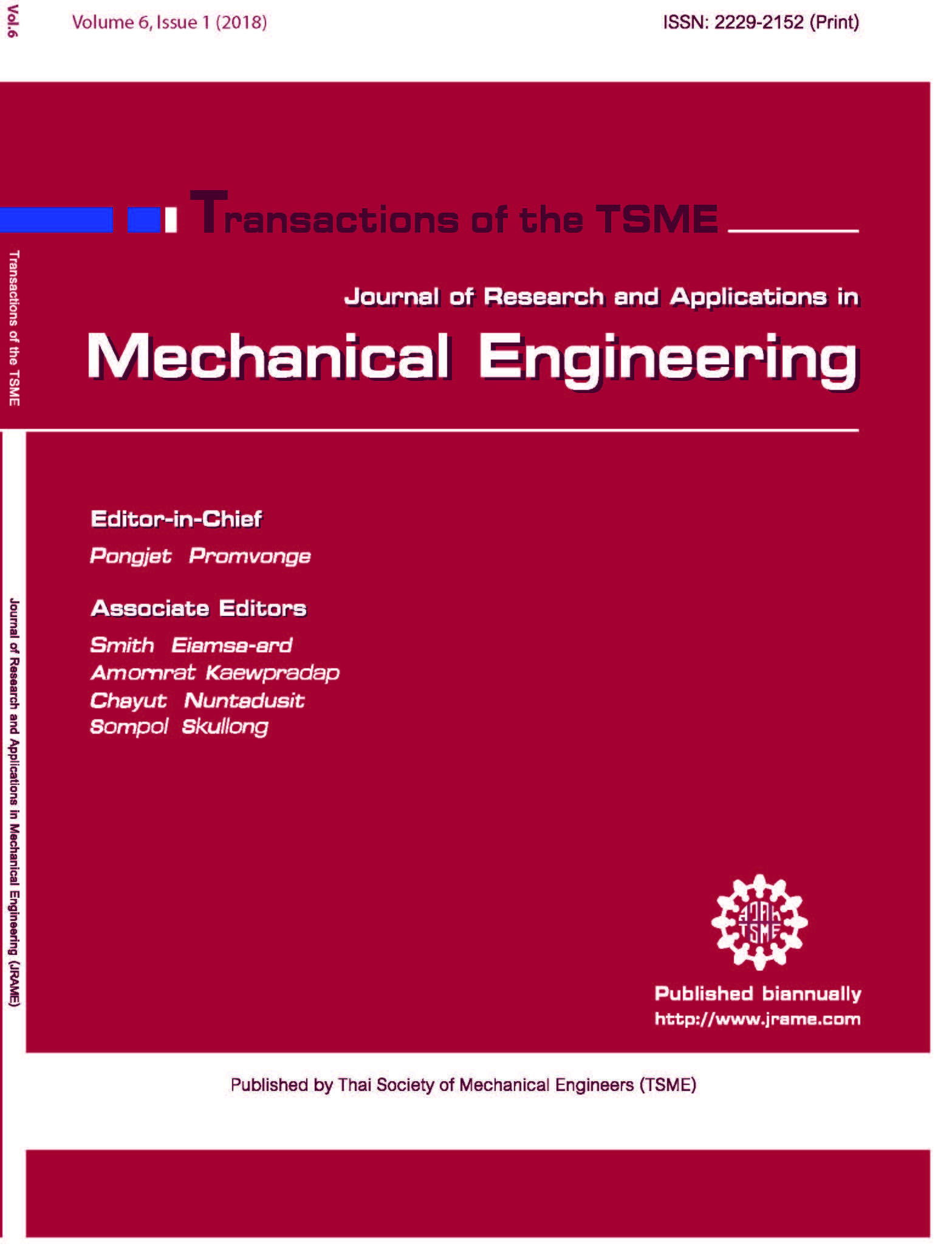Investigation on profile of slots machined by electrochemical milling with hollow electrode
Main Article Content
Abstract
This study investigated the fabrication of slots by electrochemical milling using hollow electrodes. The influence on process performance of different applied voltages, tool feed rates, and tool diameters were studied using experimental and numerical methods. Experimental results showed that a part-sinusoidal profile appeared at the center of the slots bottom face and that machining accuracy depends not only on machining parameters but also on tool diameter. An in-house boundary element program for electrochemical milling process has been developed to predict the shape of slots machined by hollow electrodes in a three-dimensional domain, and the predicted shapes were compared with the actual machined slots, showing agreement between the predicted and experimental results.
Article Details
This work is licensed under a Creative Commons Attribution-NonCommercial-ShareAlike 4.0 International License.
References
[2] Walker, J.C., Kamps, T.J., Lam, J.W., Mitchell-Smith, J. and Clare, A.T. Tribological behaviour of an electrochemical jet machined textured Al-Si automotive cylinder liner material, Wear, Vol. 376-377(Part B), 2017, pp. 1611-1621.
[3] Kamaraj, A.B., Sundaram, M.M. and Mathew, R. Ultra high aspect ratio penetrating metal microelectrodes for biomedical applications, Microsyst Technol., Vol. 19, 2013, pp. 179-186.
[4] Singh, J., Jain, V.K. and Ramkumar, J. Fabrication of complex circuit on printed circuit board (PCB) using electrochemical micro-machining, Int. J. Adv. Manuf. Technol., Vol. 85, 2016, pp. 2073-2081.
[5] Mishra, K., Dey, D., Sarkar, B.R. and Bhattacharyya, B. Experimental investigation into electrochemical milling of Ti6Al4VK, J. Manuf. Processes, Vol. 29, 2017, pp. 113-123.
[6] Ghoshal, B. and Bhattacharyya, B. Generation of microfeatures on stainless steel by electrochemical micromachining, Int. J. Adv. Manuf. Technol., Vol. 76, 2015, pp. 39-50.
[7] Hinduja, S. and Pattavanitch, J. Experimental and numerical investigations in electro-chemical milling, CIRP Journal of Manufacturing Science and Technology, Vol. 12, 2016, pp. 79-89.
[8] Kim, B.H., Ryu, S.H., Choi, D.K. and Chu, C.N. Micro electrochemical milling, J. Micromech. Microeng., Vol. 15, 2005, pp. 124-129.
[9] Ghoshal, B. and Bhattacharyya, B. Investigation on profile of microchannel generated by electrochemical micromachining, J. Mater. Process. Technol., Vol. 222, 2015, pp. 410-421.
[10] Chen, C., Li, J., Zhan, S., Yu, Z. and Xu, W. Study of micro groove machining by micro ECM, Procedia CIRP., Vol. 42, 2016, pp. 418-422.
[11] Vanderauwera, W., Vanloffelt, M., Perez, R. and Lauwersa, B. Investigation on the performance of macro electrochemical milling, Procedia CIRP., Vol. 6, 2013, pp. 356-361.
[12] Kozak, J., Chuchro, M., Ruszaj, A. and Karbowski, K. The computer aided simulation of electrochemical process with universal spherical electrodes when machining sculptured surfaces, J. Mater. Process. Technol., Vol. 107, 2000, pp. 283-287.
[13] Ruszaj, A. and Zybura-Skrabalak, M. The mathematical modelling of electrochemical machining with flat ended universal electrodes, J. Mater. Process. Technol., Vol. 109, 2001, pp. 333-338.
[14] Kozak, J., Rajurkar, K.P. and Makkar, Y. Study of pulse electrochemical micromachining, J. Manuf. Processes, Vol. 6, 2004, pp.7-14.
[15] Liu, Y., Zhu, D. and Zhu, L. Micro electrochemical milling of complex structures by using in situ fabricated cylindrical electrode, Int. J. Adv. Manuf. Technol., Vol. 60, 2012, pp. 977-984.
[16] Purcar, M., Bortels, L., Van den Bossche, B. and Deconinck, J. 3D Electrochemical machining computer simulations, J. Manuf. Processes, Vol. 149, 2004, pp.472-478.
[17] Pattavanitch, J., Hinduja, S. and Atkinson, J. Modelling of the electrochemical machining process by the boundary element method, CIRP Annals, Vol. 59(1), 2010, pp. 243-246.
[18] McGeough, J.A. Principles of Electrochemical Machining, 1975, Chapman and Hall, UK.
[19] Miguel, A.P., Jose, P.S., and Angel, P. Refinement based on longest-edge and self-similar four-triangle partitions, Mathematics and Computers in Simulation, Vol. 75, 2006, pp.251-262.



